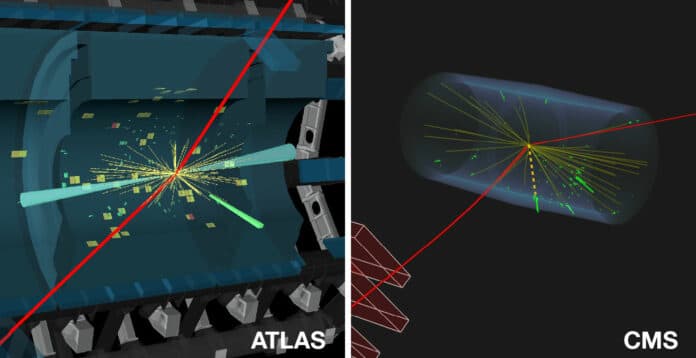According to the Standard Model, 0.15% of Higgs bosons will decay into a Z boson and a photon if the Higgs boson has a mass of about 125 billion electronvolts. However, other models surpassing the Standard Model forecast a different degradation rate. Therefore, measuring the decay rate offers useful information about the Higgs boson’s existence as well as physics outside the scope of the Standard Model.
The Higgs boson’s rare decay into a Z boson, the electrically neutral carrier of the weak force, and a photon, the carrier of the electromagnetic force, is reported for the first time by ATLAS and CMS at the Large Hadron Collider Physics (LHCP) conference this week. Indirect proof of the existence of particles other than those anticipated by the Standard Model of particle physics may be offered by this Higgs boson decay.
Similar to a decay into two photons, the Higgs boson can decay into a Z boson and a photon. The Higgs boson does not directly decay into these pairs of particles in these operations. Instead, the decays occur through an intermediate “loop” of “virtual” particles that appear and disappear but cannot be directly observed. There may be new unidentified particles in these virtual particles that interact with the Higgs boson.
The outcome’s statistical significance is just 3.4 standard deviations, less than the threshold of 5 standard deviations needed to make an observational claim. The measured signal rate is 1.9 standard deviations higher than the prediction made by the Standard Model.
ATLAS physics coordinator Pamela Ferrari said, “Each particle has a special relationship with the Higgs boson, searching for rare Higgs decays a high priority. Through a meticulous combination of the individual results of ATLAS and CMS, we have made a step towards unraveling yet another riddle of the Higgs boson.”
CMS physics coordinator Florencia Canelli said, “The existence of new particles could have very significant effects on rare Higgs decay modes. This study is a powerful test of the Standard Model. With the ongoing third run of the LHC and the future High-Luminosity LHC, we can improve the precision of this test and probe ever rarer Higgs decays.”
